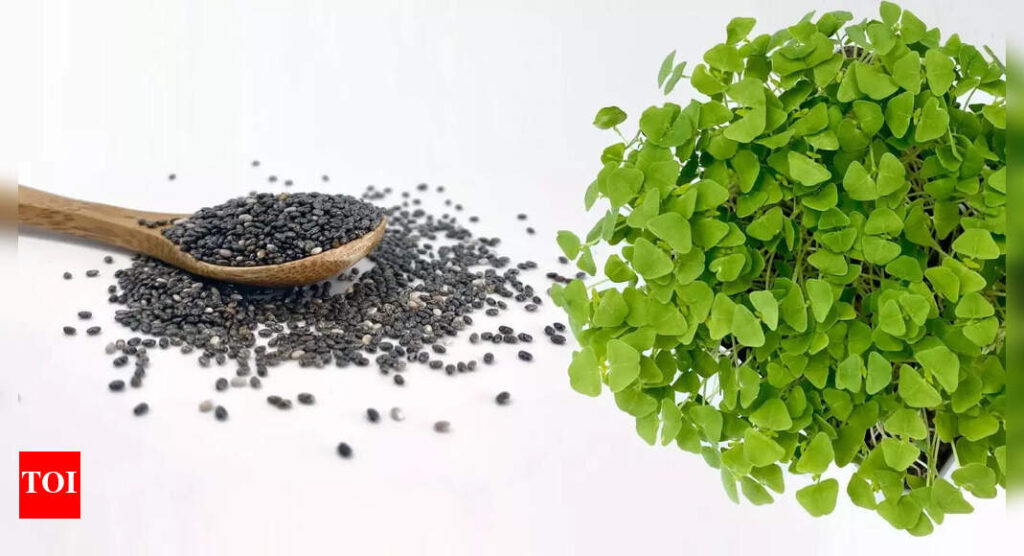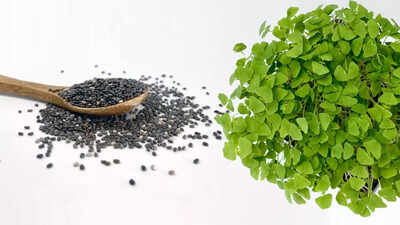Chia seeds have been enjoying all the limelight they deserve. Those tiny yet mighty seeds (Salvia hispanica) have long been heralded as a “superfood” – and rightly so. Packed with nutrients, omega‑3s, fiber, protein, and minerals, they’ve captured wellness enthusiasts’ attention. But now, their younger siblings – chia microgreens – are gaining traction.Chia microgreens – sprouted seedlings harvested about 7–14 days post-germination – harness the power of photosynthesis and concentrated nutrition, and are rapidly gaining popularity in the wellness world.This clash of superfood titans begs the question: Which one is healthier?Let’s deep dive into their benefits, differences, and which one might reign supreme for better health benefits.
The difference in definitions
Chia seeds come from Salvia hispanica – tiny, nutrient-dense seeds renowned for their high fiber, protein, and omega‑3 fatty acids. They swell into a gel when soaked, making them popular in puddings and smoothies.
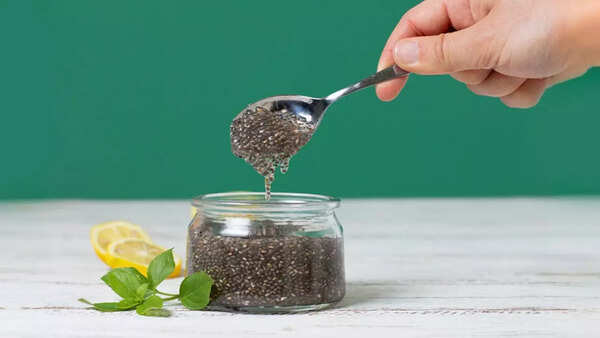
Chia microgreens are the young shoots of the chia plant, harvested a week or two after germination. Unlike sprouts, they grow in soil or hydroponically, gaining chlorophyll and early leafy greens nutrients.
Macronutrient profile
Chia seeds: Approximately 100 g of seeds contain ~31 % fat (largely ALA omega‑3), 16 % protein, and 42 % carbs (including ~34 % fiber). A two-tablespoon serving (~28 g) delivers about 5 g omega‑3s, 5 g protein, and 10 g fiber – ideal for heart and gut health.Chia microgreens: These young shoots contain ~34.7 % protein, just 6.9 % fat, ~32 % carbs, and 18 % ash (minerals) on a dry-weight basis. Per 100 g fresh, they yield around 16.5 g protein, 30.7 g fat, and 34.4 g fiber. Although fat appears fresh, most weight is water; the dry-fat content remains low.The bottom line: Chia seeds are rich in healthy fats; microgreens pack more protein and fiber per calorie.
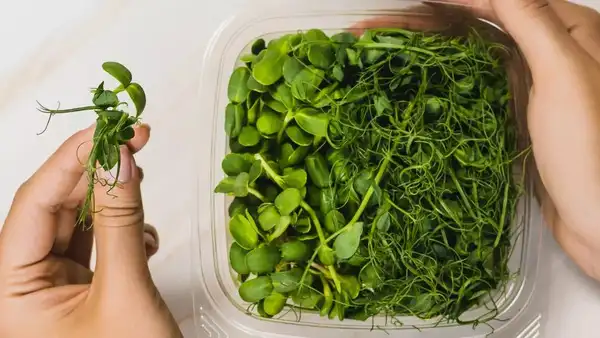
Micronutrient and antioxidant density
Chia seeds: A powerhouse of B‑vitamins, calcium, magnesium, phosphorus, iron, zinc, manganese, and selenium. Antioxidant compounds like chlorogenic and caffeic acid support reducing oxidative damage.Chia microgreens: Impressively high in minerals, they deliver ~48.5 % daily calcium, ~80 % magnesium, ~69 % phosphorus, ~42 % iron, ~118 % manganese, ~100 % selenium, and significant zinc and copper per 100 g. They are also rich in flavonoids – kaempferol, quercetin – and vitamins C, A, E, and chlorophyll-derived antioxidants. Light exposure further boosts antioxidant levels in microgreens.The bottom line: Microgreens clearly offer higher micronutrient density and antioxidant diversity.
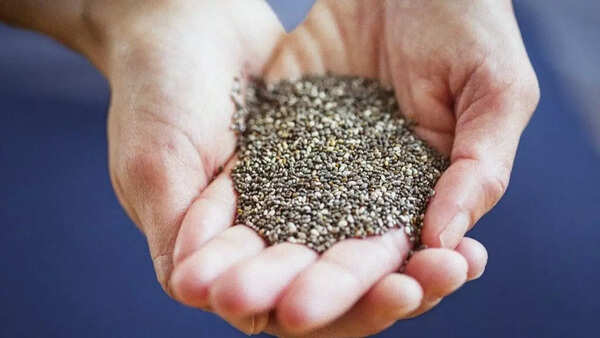
Bioavailability and digestibility
Chia seeds: Their high fiber can slow digestion – soaking or grinding before consumption improves nutrient access. Seeds also contain anti-nutrients like phytic acid, which reduce the absorption of minerals like iron and zinc, unless preparation techniques are used.Chia microgreens: Germination degrades anti-nutrients, and enzyme activity increases, improving mineral bioavailability and digestion.The bottom line: Microgreens edge out in digestibility and nutrient availability.
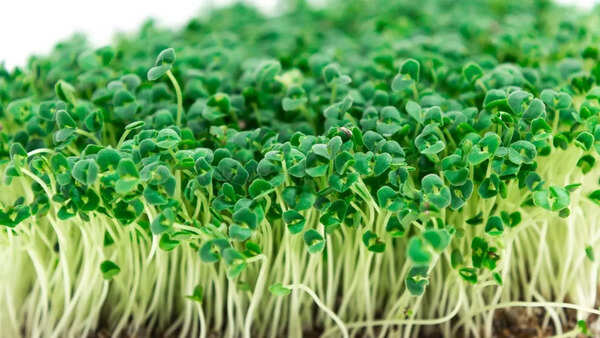
Health impacts
Heart and metabolism: Chia seeds’ omega‑3 and fiber improve LDL cholesterol, triglycerides, blood pressure, glycemic control, and satiety. Microgreens offer dietary fiber and antioxidants like quercetin and caffeic acid, linked to improved cardiovascular health and reduced insulin resistance.Bone and immunity: Seeds provide calcium and magnesium; microgreens provide even more minerals along with vitamins (A, C, E, K) that support bone integrity and immune function.Gut and weight management: Both deliver gut-supporting fiber. While seeds ferment in the gut and promote microbiome health, sprouts supply enzymes aiding digestion.Brain and mood: Seeds’ omega‑3 supports cognitive function and mood regulation. Microgreens also contribute omega‑3, B vitamins, antioxidants, and fiber (gut‑brain axis support).Antioxidant and anti‑inflammatory action: Seed antioxidants help combat chronic inflammation; germination significantly increases phenolic content – chia microgreens deliver elevated antioxidant power.
Practical and culinary considerations
Versatility and shelf life: Chia seeds are shelf-stable, convenient, and easily integrated into smoothies, puddings, yogurt, and baking. However, excessive fiber intake can cause digestive discomfort – hydration is key.Freshness and growing: Microgreens must be grown or stored fresh; they offer fresh flavor – slightly minty or bitter – and lose nutritional value quickly. Some growers find chia microgreens surprisingly bitter or off-flavored.
To wrap it up…
Chia seeds and chia microgreens are nutritional powerhouses in their own right. Seeds and microgreens are not competitors but complements. Seeds deliver essential fats, fiber, and convenience. Microgreens turbocharge protein, minerals, vitamins, antioxidants, and freshness. Seeds excel at delivering omega‑3s, fiber, minerals, and convenience. Microgreens deliver a punch of bioavailable protein, micronutrients, antioxidants, enzymes, and freshness.To truly eat for vitality, include both. Try chia-seed pudding topped with fresh microgreens, or blend both into a vibrant smoothie or wrap. This dual approach offers healthy fats, fiber, complete protein, vitamins, minerals, enzymes – all in one meal. Variety is the hallmark of a resilient, nutrient-rich diet – one that nourishes the body, mind, and palate.

